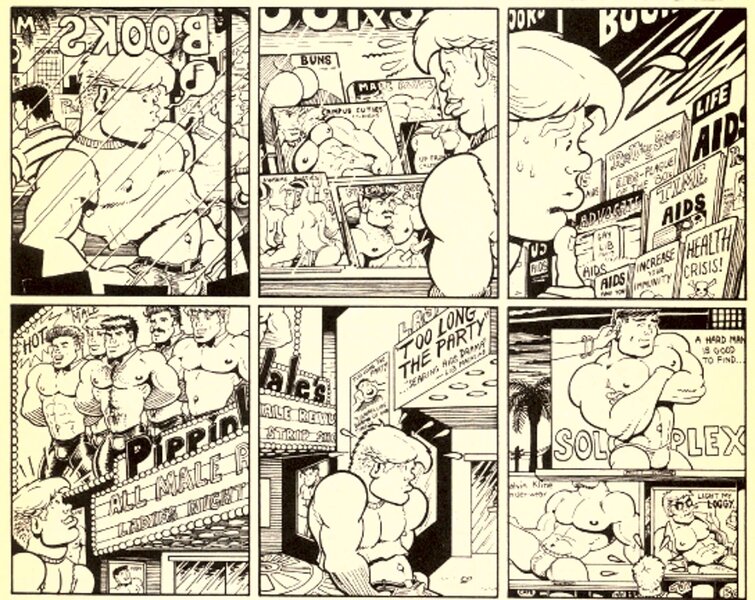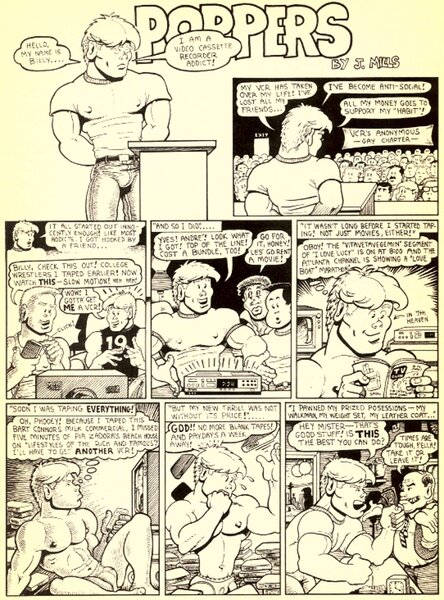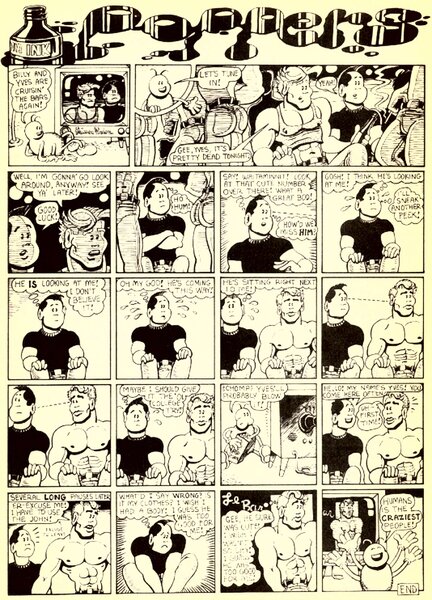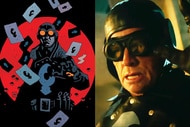Create a free profile to get unlimited access to exclusive videos, sweepstakes, and more!
Pride-ographies: Jerry Mills
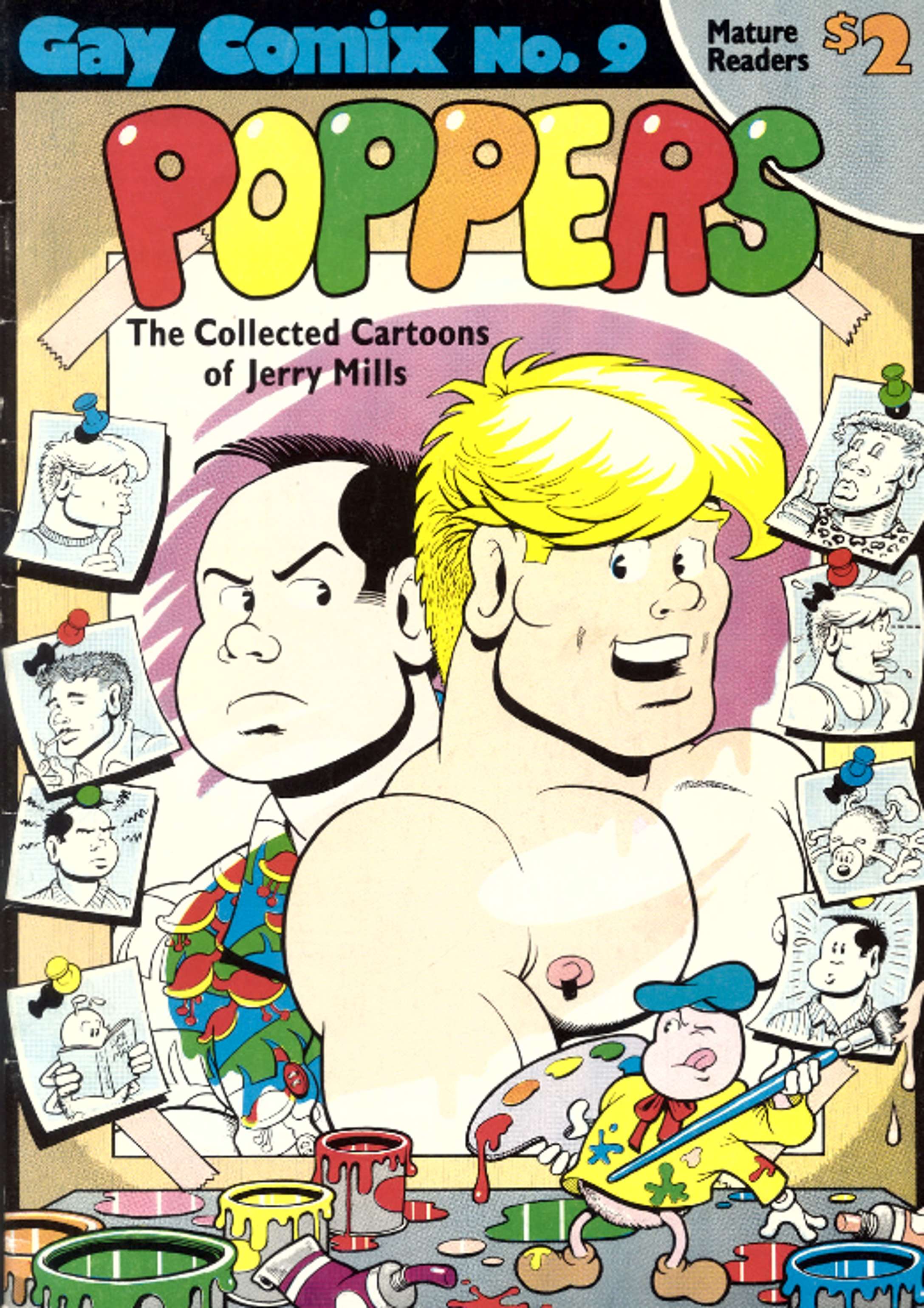
The Underground Comix era began in the late '60s in response to the heavy censorship of the medium due to the presence of the Comics Code Authority. People wanted to make books that looked like their lives, and so, as we had the indie explosion in cinema, so did comics see their own groundbreaking era of creativity. Some of these comix aged well, many of them haven't, but all of them existed in the spirit of disrupting the status quo of the medium.
When discussing an era of experimental and groundbreaking autobiographical works in the comix scene, queer comix by queer creators so often fall by the wayside. While many artists of this time period went on to have illustrious careers, queer creators get nary more than a footnote. In hopes of changing the conversation for the better, we bring you Pride-ographies, a series of deep dives into queer comix history.
Of all the contributors to Gay Comix, only a few had entire issues dedicated to their work. One was Alison Bechdel, with the Featuring Absolutely NO Dykes To Watch Out For special in #19, and another was Jerry Mills, whose name might be a little less well-known today, but who was one of the most important queer underground comic artists of his era. Mills' best known work is the ongoing serial Poppers, which first appeared in the gay men's magazine In Touch for Men. It also has the distinction of being one of the few gay comics of the time to be published internationally, appearing via reprint in French and Japanese magazines. Mills did go on to work for Advocate Men, producing comics for them somewhat sporadically before he passed away due to complications of HIV in 1993. When you look over Mill's work, you can't help but get the sense of a career cut short, but what he left behind is substantial enough that it inspired many of his peers.
There is very little information available online on Jerry Mills, and if any interviews were conducted with him before his death in zines or gay magazines of the time, they have not yet made their way to the internet. Besides the sparse details of his life available through Wikipedia (with no references credited), we can't have much in the way of context for his work. Yet, the work does tend to speak for itself on most points. While most creators felt compelled to focus either on erotica or humor, Mills was one of the few of his era and beyond that was able to do both.
Though he appeared in several issues of the series, the all-Poppers issue, Gay Comix #9, remains the most comprehensive collection of his work to this day. Poppers follows the sexual exploits of Billy and the lack thereof for his best friend Yves. Billy is the standard handsome muscle man trope who falls in love multiple times a day while Yves is nervous, shy and struggling with body image. Billy has many affairs through his connection to gay nightlife while Yves has a hard time responding even when someone is obviously flirting with him.
Even if the strip is lighthearted in tone, it still deals with some fairly heavy subject matter. One of the first recurring characters of the strip is one of Billy's talking crab lice, so the comic more or less opens with an irreverent commentary on STDs. Though the relationship between Billy and Yves is your typical odd-couple dynamic, you still learn a lot about the dangers of extremes through their interactions. Billy could absolutely stand to be a little more prudent while Yves would be better off adopting some of Billy's go-with-the-flow attitude.
Poppers is an important comic, not just for its humor but because of its connection to the gay nightlife of the 1970s. This is a world that was almost never seen in comics outside of erotica or anthologies like Gay Comix or Meatmen. By showing characters struggling with exploitative men, power dynamics in casual relationships, and both the freedom and the danger of gay male visibility and sexuality in the time, Poppers manages to be a spoof while offering some genuine substance. Besides all that, it's funny, and it never takes itself too seriously, putting it very much in line with the work of other Gay Comix artists like Roberta Gregory and Jennifer Camper.
Mills unfortunately passed away before Gay Comix had fully run its course, one of the casualties of the AIDS crisis that took so many brilliant minds from the world. Yet, his record of activism is clear. He attended ACT UP meetings even in the ill health of his later life, and designed posters for Queer Nation in support of queer people endangered by homophobia. Though one can't help but wonder what else Mills might have accomplished in his life, where his art might have gone, and what he might have had to say about it in retrospect, he did leave an impact on underground comix and inspired many of the editors and creators that worked with him. Indeed, when any of the editors of the series has been asked who their favorite creators of the book were, Mills' name inevitably comes up.
